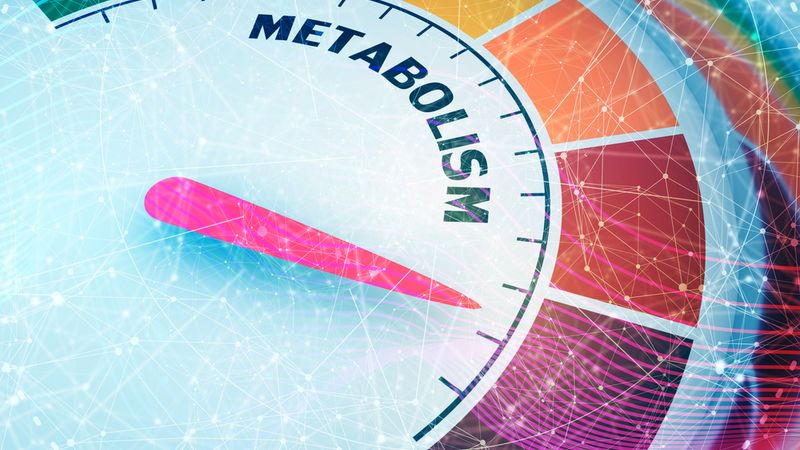

Our Review Process
Our articles undergo extensive medical review by board-certified practitioners to confirm that all factual inferences with respect to medical conditions, symptoms, treatments, and protocols are legitimate, canonical, and adhere to current guidelines and the latest discoveries. Read more.
Our Editorial Team
Shifa Fatima, MSc.
Author
Dr. Apoorva T, MHM.
MEDICAL ADVISOR
Key Metabolic Health Terms you should know
A1c/HbA1c Test
This blood sugar test measures the percentage of red blood cells in the body that have glucose molecules attached to them. Unlike fasting glucose tests, this kind of blood sugar analysis shows you the average glucose levels for the past three months and measures the length of time glucose molecules stay bound to the haemoglobin.
Adipose
This is the technical name for fat tissues as they are made of fat cells called adipocytes. This kind of tissue is responsible for the endocrine function and releasing hormones like leptin and adiponectin that act on our appetite and affect insulin sensitivity.
AUC/Area Under the Curve
When you plot any values (glucose in the case of metabolic health) as a line chart, it should resemble an image of rolling hills. Any area seen under the line shows the height to which glucose levels had risen in the body and how long they remained elevated. Ideally, you should see lower spikes that return to normal quickly.
ATP
This is the short form of adenosine triphosphate produced by the mitochondria and is the body's energy currency.
Beta Cells
These cells are located in the pancreas. They are the ones that create and release insulin, which in turn helps to regulate the blood glucose levels in the body.
Biomarkers
Any medical substance or sign that can be measured is a biomarker.
Blood sugar
This is the measure of glucose that is circulating in the body.
CGM
This is the short form for a continuous glucose monitor. It is a tiny wearable device that, when attached, measures what is going on inside the body. A CGM measures glucose concentration with the help of a small probe that usually sits under the skin and can sample interstitial fluid between the cells under the skin as a proxy for blood.
Endocrine
The endocrine system consists of all the glands in the body that produce and secrete hormones. The pituitary gland, ovaries, thyroid gland, and testes are all part of the endocrine system.
GLP-1
This is the short form of glucagon-like peptide-1; one of the significant effects of this hormone is to promote the secretion of insulin in response to glucose.
Glucose
This simple carbohydrate is one of the two significant sources of energy in the body. It is a monosaccharide, i.e. a simple sugar that can be easily broken down in the body.
GLUT4
This is the acronym for glucose transporter type 4. As the name suggests, this portion transports proteins helping muscles and adipose tissue absorb glucose readily available in the bloodstream.
Glycation
The process of the glucose molecule (present in the blood) attaching to the red blood cells (RBCs) is called glycation. While this is a normal process, too much of it can create molecules that cause inflammation and lead to various health issues.
Glycemic index
The glycemic index (GI) is a cheat sheet that shows how quickly food can raise your blood sugar levels. Anything with a high GI can cause a spike in blood sugar, while those with low GI take longer to process and release glucose slowly into the body.
Hyperglycemia
This is the medical term for high glucose levels. This is one of the significant indicators that can tell you if a person may have diabetes.
Hypoglycemia
This is the medical term for low blood glucose levels, resulting in fatigue or a jittery feeling.
Inflammation
Inflammation is the swelling or redness you may have observed on the body. Inflammation can also occur within the body to respond to viruses or damage to cells. Inflammation is also considered one factor that indicates metabolic dysfunction in the body.
Insulin
Insulin, as mentioned before, is a hormone that is released in response to glucose in the body. Almost every cell contains receptors for insulin, and each cell reacts to insulin differently. In the case of muscles and fat, insulin helps to stimulate the uptake of glucose in the cell. Any irregularities in this hormone can lead to some health conditions.
Insulinemia or hyperinsulinemia
This is the existence of higher insulin levels in the body resulting in insulin resistance.
Ketones
Ketones are the result of the body burning fat cells to produce energy.
Metabolic flexibility
The ability of the body to switch from using glucose to fat as fuel is known as metabolic flexibility. A person needs to train their body to be more efficient in making the switch faster and keeping their energy levels up.
Metabolic fitness
When all the energy-producing pathways in the body are working smoothly, the body is said to be in optimal metabolic fitness.
Metabolic syndrome
This is the opposite of metabolic fitness; in this state, the body is at risk of health issues such as diabetes, heart disease, strokes, etc.
Mitochondria
This is the energy centre of the cell that helps to produce ATP.
Mg/dL
This is the unit of measuring the amount of glucose (substance) in the blood (fluid); its complete form is milligrams per decilitre.
Subcutaneous
The area that lies just below the skin.
T1D
Type 1 Diabetes. This is a hereditary condition in which the body does not make enough insulin to regulate the blood sugar levels in the body.
T2D
Type 2 Diabetes. This is a rarer form of diabetes that is usually caused due to an unhealthy lifestyle and eating habits. With the proper diet and regular exercise, it can generally be reversed or kept in control. Now that you are familiar with all the terms you will come across while reading about metabolic health, you will better understand the data and put it into practice to live a healthy lifestyle.

References
- https://www.ncbi.nlm.nih.gov/pmc/articles/PMC4826609/
Disclaimer
This website's content is provided only for educational reasons and is not meant to be a replacement for professional medical advice. Due to individual differences, the reader should contact their physician to decide whether the material is applicable to their case.






_1lAR9W.png)
_Z12iaBn.png)
